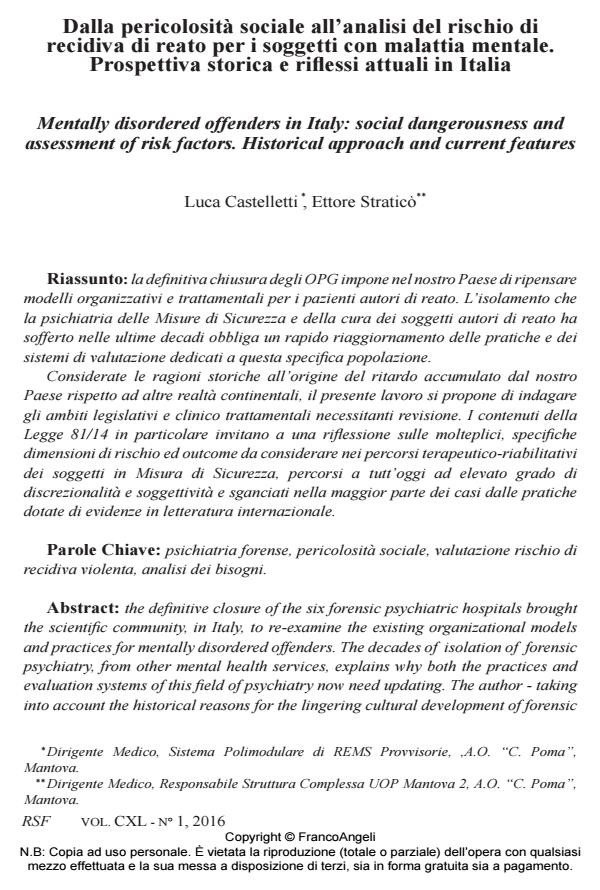Mentally disordered offenders in Italy: social dangerousness and assessment of risk factors. Historical approach and current features
Journal title RIVISTA SPERIMENTALE DI FRENIATRIA
Author/s Laura Castelletti, Ettore Straticò
Publishing Year 2016 Issue 2016/1
Language Italian Pages 18 P. 133-150 File size 1679 KB
DOI 10.3280/RSF2016-001009
DOI is like a bar code for intellectual property: to have more infomation
click here
Below, you can see the article first page
If you want to buy this article in PDF format, you can do it, following the instructions to buy download credits

FrancoAngeli is member of Publishers International Linking Association, Inc (PILA), a not-for-profit association which run the CrossRef service enabling links to and from online scholarly content.
The definitive closure of the six forensic psychiatric hospitals brought the scientific community, in Italy, to re-examine the existing organizational models and practices for mentally disordered offenders. The decades of isolation of forensic psychiatry, from other mental health services, explains why both the practices and evaluation systems of this field of psychiatry now need updating. The author - taking into account the historical reasons for the lingering cultural development of forensic psychiatry in Italy, compared to other European countries - examines the scientific, legislative and political factors that determined the promulgation of the Law 09/2012 and discusses the contents of the following Law 81/2014 on the risks and outcomes for mentally disordered offenders in forensic psychiatric rehabilitation. The author concludes that forensic psychiatric practices in Italy still follow principles of discretion and subjectivity and not evidence-based criteria.
Keywords: Forensic psychiatry, social dangerousness, violence risk assessment, needs assessment
- L'integrazione come archetipo della trasformazione dell'OPG di Castiglione delle Stiviere in Sistema Polimodulare di REMS in RIVISTA SPERIMENTALE DI FRENIATRIA 1/2017 pp.55
DOI: 10.3280/RSF2017-001005
Laura Castelletti, Ettore Straticò, Dalla pericolosità sociale all’analisi del rischio di recidiva di reato per i soggetti con malattia mentale. Prospettiva storica e riflessi attuali in Italia in "RIVISTA SPERIMENTALE DI FRENIATRIA" 1/2016, pp 133-150, DOI: 10.3280/RSF2016-001009